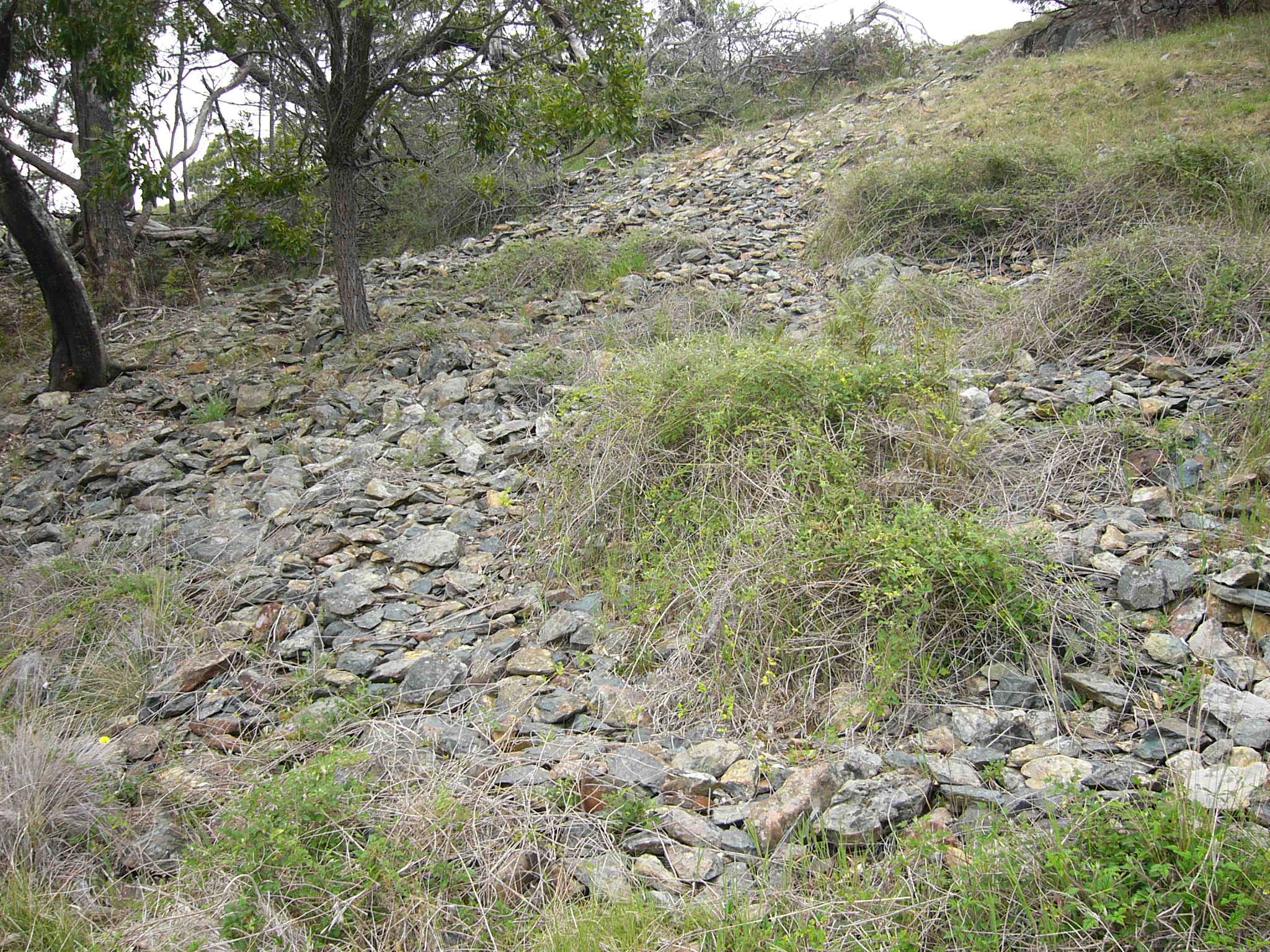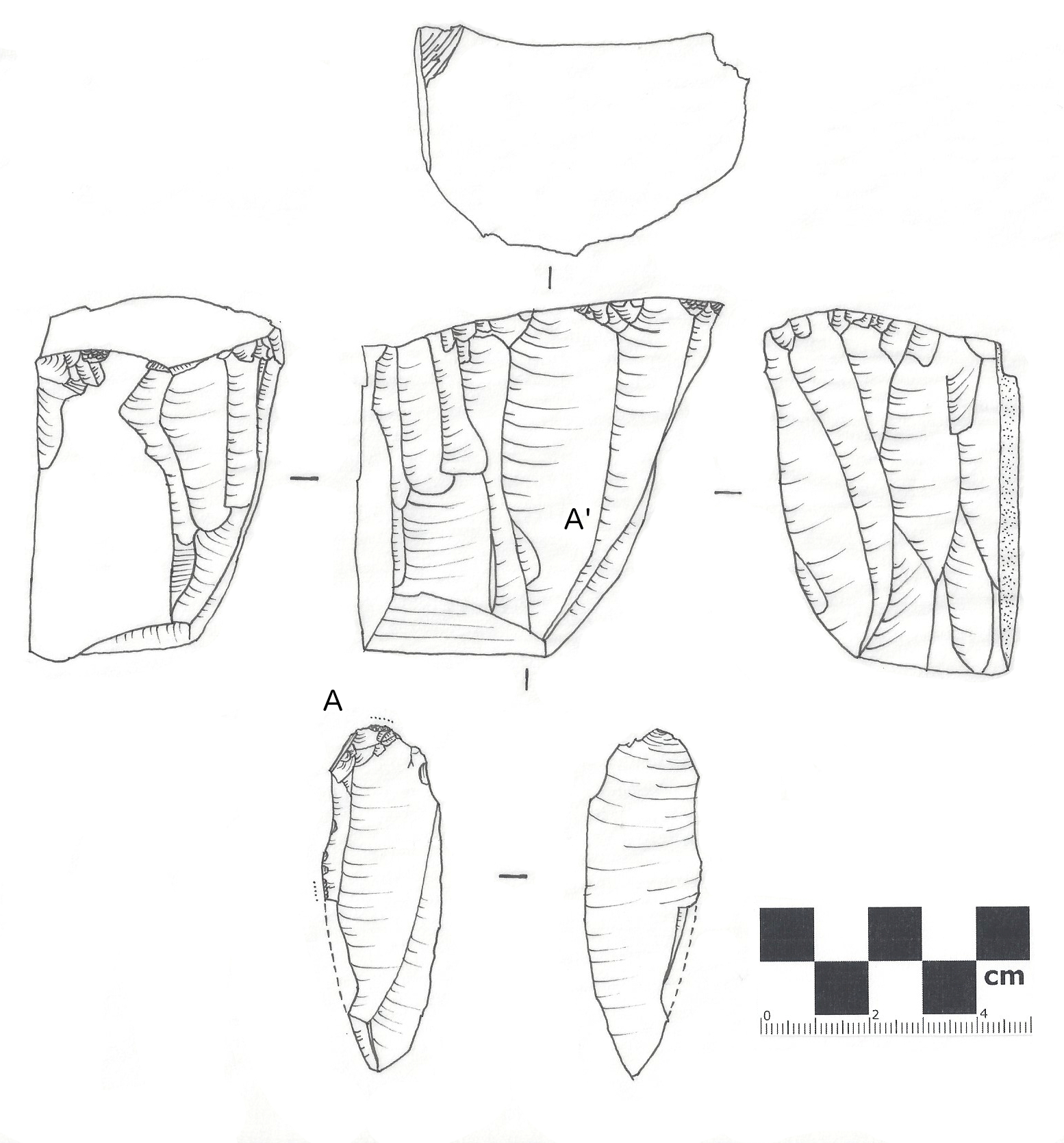|
Termination Type
{{short description, Characteristic in lithic reduction In lithic reduction, termination type is a characteristic indicating the manner in which the distal end of a lithic flake detaches from a lithic core, core (Andrefsky 1998:18). Common types include: * Step/snap termination – these occur when a flake snaps or breaks during removal, resulting in an abrupt right-angle break. * Hinge termination – results when the applied force rolls away from the core or objective piece, creating a rounded or blunted distal end. * Overshot/outrepasse/plunging termination - occurs when the applied force dips and removes a section of the opposite margin of the artifact or the distal end of the core. Also referred to as a reverse hinge termination. * Perverse termination - "twisting" breaks resulting from when the applied force is redirected through the material in a Helix, helical fashion; * Feather/monotomic termination – a smooth termination that results in a feathered distal end. The dist ... [...More Info...] [...Related Items...] OR: [Wikipedia] [Google] [Baidu] |
Lithic Reduction
In archaeology, in particular of the Stone Age, lithic reduction is the process of fashioning stones or rocks from their natural state into tools or weapons by removing some parts. It has been intensely studied and many archaeological industries are identified almost entirely by the lithic analysis of the precise style of their tools and the chaîne opératoire of the reduction techniques they used. Normally the starting point is the selection of a piece of tool stone that has been detached by natural geological processes, and is an appropriate size and shape. In some cases solid rock or larger boulders may be quarried and broken into suitable smaller pieces, and in others the starting point may be a piece of the debitage, a flake removed from a previous operation to make a larger tool. The selected piece is called the lithic core (also known as the "objective piece"). A basic distinction is that between flaked or knapped stone, the main subject here, and ground stone object ... [...More Info...] [...Related Items...] OR: [Wikipedia] [Google] [Baidu] |
Lithic Flake
In archaeology, a lithic flake is a "portion of rock removed from an objective piece by percussion or pressure,"Andrefsky, W. (2005) ''Lithics: Macroscopic Approaches to Analysis''. 2d Ed. Cambridge, Cambridge University Press and may also be referred to as simply a ''flake'', or collectively as debitage. The objective piece, or the rock being reduced by the removal of flakes, is known as a core.Andrefsky, W. (2005) ''Lithics: Macroscopic Approaches to Analysis''. 2d Ed. Cambridge, Cambridge University Press Once the proper tool stone has been selected, a percussor or pressure flaker (e.g., an antler tine) is used to direct a sharp blow, or apply sufficient force, respectively, to the surface of the stone, often on the edge of the piece. The energy of this blow propagates through the material, often ( but not always) producing a Hertzian cone of force which causes the rock to fracture in a controllable fashion. Since cores are often struck on an edge with a suitable angle (<90°) ... [...More Info...] [...Related Items...] OR: [Wikipedia] [Google] [Baidu] |
Lithic Core
In archaeology, a lithic core is a distinctive artifact that results from the practice of lithic reduction. In this sense, a core is the scarred nucleus resulting from the detachment of one or more flakes from a lump of source material or tool stone, usually by using a hard hammer precursor such as a hammerstone. The core is marked with the positive scars of these flakes. The surface area of the core which received the blows necessary for detaching the flakes is referred to as the striking platform. The core may be discarded or shaped further into a core tool, such as can be seen in some types of handaxe. The purpose of core reduction may be to rough out a blank for later refinement into a projectile point, knife, or other stone tool, or it may be performed in order to obtain sharp flakes, from which a variety of simple tools can be made. Generally, the presence of a core is indicative of the latter process, since the former process usually leaves no core. Because the morpholo ... [...More Info...] [...Related Items...] OR: [Wikipedia] [Google] [Baidu] |
Helix
A helix () is a shape like a corkscrew or spiral staircase. It is a type of smooth space curve with tangent lines at a constant angle to a fixed axis. Helices are important in biology, as the DNA molecule is formed as two intertwined helices, and many proteins have helical substructures, known as alpha helices. The word ''helix'' comes from the Greek word ''ἕλιξ'', "twisted, curved". A "filled-in" helix – for example, a "spiral" (helical) ramp – is a surface called ''helicoid''. Properties and types The ''pitch'' of a helix is the height of one complete helix turn, measured parallel to the axis of the helix. A double helix consists of two (typically congruent) helices with the same axis, differing by a translation along the axis. A circular helix (i.e. one with constant radius) has constant band curvature and constant torsion. A ''conic helix'', also known as a ''conic spiral'', may be defined as a spiral on a conic surface, with the distance to the apex an expo ... [...More Info...] [...Related Items...] OR: [Wikipedia] [Google] [Baidu] |
Retouch (lithics)
Retouch is the act of producing scars on a stone flake after the ventral surface has been created. It can be done to the edge of an implement in order to make it into a functional tool, or to reshape a used tool. Retouch can be a strategy to reuse an existing lithic artifact and enable people to transform one tool into another tool. Depending on the form of classification that one uses, it may be argued that retouch can also be conducted on a core-tool, if such a category exists, such as a hand-axe. Retouch may simply consist of roughly trimming an edge by striking with a hammerstone, or on smaller, finer flake or blade tools it is sometimes carried out by pressure flaking. Other forms of retouch may include burination, which is retouch that is conducted in a parallel orientation to the flake margin. Retouch is often taken as one of the most obvious features distinguishing a tool from a waste by-product of lithic manufacture (debitage In archaeology, debitage is all the material ... [...More Info...] [...Related Items...] OR: [Wikipedia] [Google] [Baidu] |



.gif)